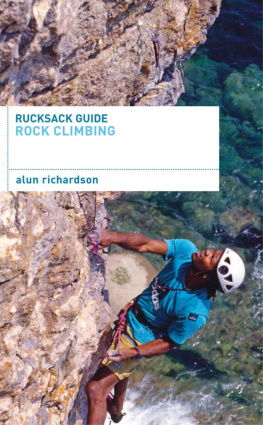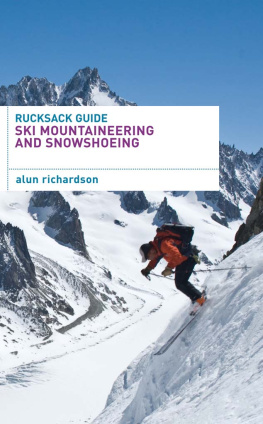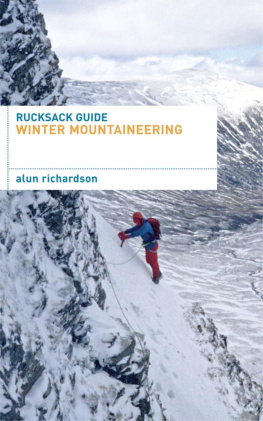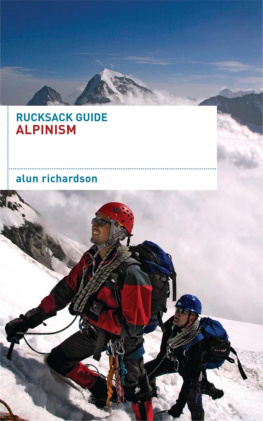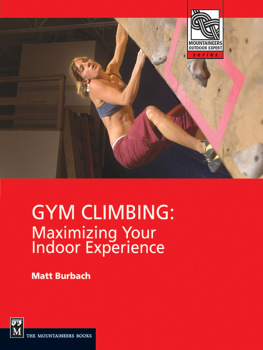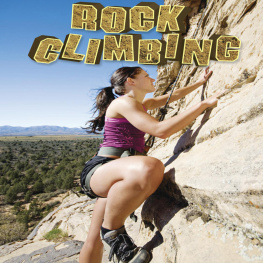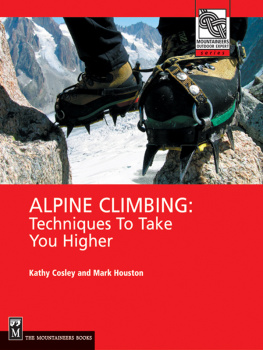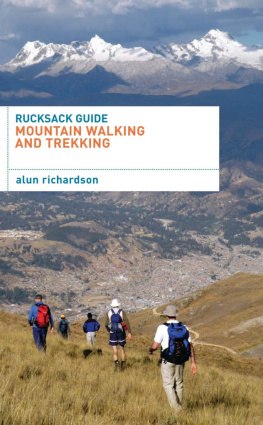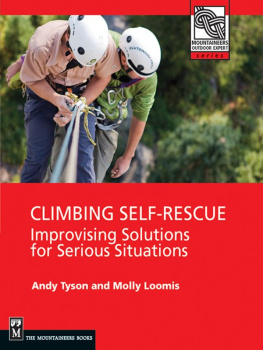
Rather than being a risk-taker, I consider myself, and my climbing peers to be risk-controllers, keeping risk at a reasonable level.
Alex Lowe, one of the worlds best climbers
Rock Climbing is the second book in the Rucksack Guide series and covers the skills and techniques required to become a competent rock climber. This handy book can be kept in your rucksack and will help you to gain the experience to climb safely anywhere in the world. The Rucksack Guide series tells you what to do in a situation, but it does not always explain why. If you want more information behind the decisions in these books, go to Mountaineering: The Essential Skills for Mountaineers and Climbers by Alun Richardson (A&C Black, 2008).
Rock climbing is hazardous, and there are always factors beyond your control. Safe climbing is having an awareness of the hazards and matching your skills and experience to the dangers to decrease the risks. Unfortunately, good judgement only comes with experience and, as Oscar Wilde said, Experience is simply the name we give to our mistakes, so always tread carefully!
For more about the author, his photographs and the mountaineering courses he runs go to:
www.alunrichardson.co.uk
Understanding how forces are generated, how to lessen them and how to use climbing equipment will make you a safer climber.
THE KILONEWTON |

|
A kiloNewton (kN) is a measurement of force. If you are hanging on a rope the force on the rope in kN is your mass divided by 100 (so a person weighing 80kg creates a force of 0.8kN). |
Impact force = the amount of energy a falling lead climber generates, reaching a maximum when the rope has fully stretched.
IF is partly dissipated by dynamic elements in the system, e.g. stretched rope fibres, friction over karabiners, the movement of the belayer, knots tightening etc.
The remaining energy is transmitted to the climber, the belayer/anchors and protection.
The force transmitted to the protection is nearly doubled.
ROPES DONT BREAK, THEY ARE CUT
A rope used for normal climbing cannot break in a fall; however, its ability to hold a fall over an edge is dramatically reduced with time.
(German Alpine Club (DAV))
If you dont trust it, get rid of it or downgrade a leading rope to top roping.

Fig. 1Forces on a climber, belayer and equipment
The severity of a fall can be approximated by the fall factor: the distance fallen divided by the amount of rope paid out, which ranges from zero to two. Zero equals no force on the rope and you have probably hit the ground! If a runner is placed at 2m the fall factor is halved.

Fig. 2Fall factor two. In this example, the climber is 4m above the belay. He falls, travelling 8m, generating an FF of two (eight divided by four).
Loads begin to multiply alarmingly at angles greater than 120 degrees. Ensure the angle formed by the protection is 90 degrees or less ().

Fig. 3Vector forces
Keep knots neat and pull them snug, but not over-tight, because the tightening process absorbs energy.
All knots should be tied leaving a tail at least 10 times as long as the diameter of the rope e.g. 11cm in an 11mm rope.


Fig. 4.1a and 4.1b Figure of eight on a bight. Usage:Tying into the rope; forming attachment points for belays. Difficult to adjust and undo after loading. The figure of nine (4.1b) takes an extra turn before finishing the knot, so is less likely to tighten.


Fig. 4.2 Rewoven figure of eight. Usage:Tying into the rope; connecting the rope to an anchor. Difficult to untie after loading, easy to see if it is tied incorrectly, does not come loose and is good at absorbing the forces generated in a fall. The rewoven overhand creates a smaller knot, but is difficult to untie.


Fig. 4.3 Double figure of eight on a bight (bunny ears). Usage:Limited use for linking two anchors at a belay. Creates two loops adjustable to differing lengths. The same knot created with an overhand knot can come undone unless both ends remain clipped.


Fig. 4.4 Clove hitch. Usage:A useful knot for attaching rope to anchor krabs. Requires a load in each direction in order to be effective and should not be relied on for use with slippery rope, as it can become loose. However, this does make it useful for adjusting the length of the running end.


Fig. 4.5 Bowline with a stopper knot. Usage:Commonly used to tie into a climbing harness. The bowline can come undone with movement, hence the stopper knot secures it.


